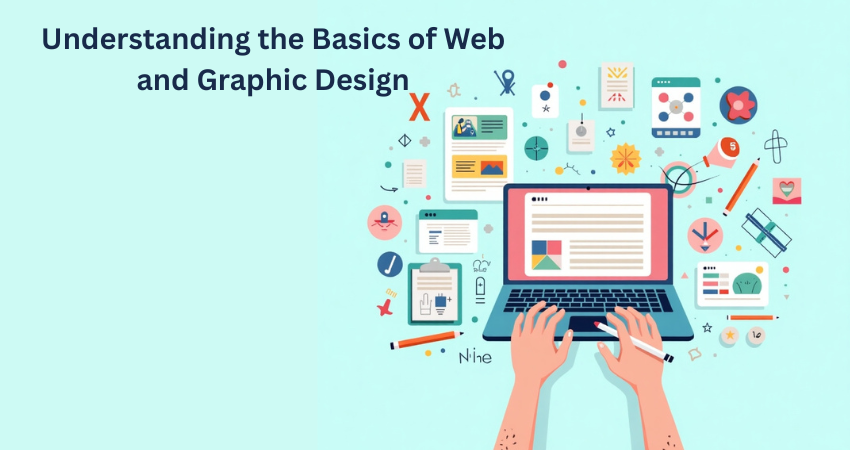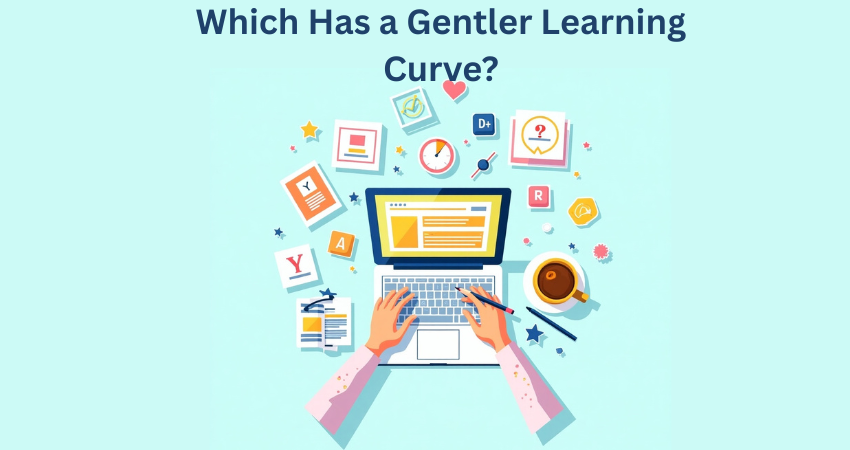
Understanding the Basics of Web and Graphic Design
A career in any of the creative sectors tends to see the integration of web design and graphic design. While both manifest the visual aesthetics of communication within the adjoining rightful purpose, they profess to owe different platforms-the former to a more technical site, and the latter fully artistically endowed.
From one perspective, web design is all about creating a functional aesthetic lease on the website. Visual design principles along with technical knowledge are used to create user-friendly and responsive websites in par with brand identity. Since web design requires implementation, web designers often work with developers to ensure their designs are brought to life and provide a seamless user experience across different devices.
On the other hand, Graphic Design is centered on the design of visual content for print and digital platforms. This includes logo and brochure design; advertisement design; and social media graphics. Graphic designers emphasize communicating through visuals: using typography, color theory, and composition to tell a story.
Knowing these base differences of each of these fields will help you decide which way best suits your interests and ambitions.
Core Skills Required in Each Field
Web Design Skills:
- Technical Proficiency: Familiarity with HTML, CSS, and basic JavaScript is essential.
- Responsive Design: Ensuring websites function seamlessly across various devices and screen sizes.
- User Experience (UX) & User Interface (UI): Designing intuitive navigation and interactive elements to enhance user engagement.
- SEO Knowledge: Understanding how design impacts search engine rankings, including site speed and mobile optimization.
Graphic Design Skills:
- Design Principles: Mastery of color theory, typography, and composition.
- Software Proficiency: Expertise in tools like Adobe Photoshop, Illustrator, and InDesign.
- Creative Thinking: Ability to conceptualize and execute compelling visual narratives.
- Attention to Detail: Ensuring consistency and precision in all design elements.
Both fields require a blend of creativity and technical skills, but the emphasis varies based on the medium and end goals.
Core Skills Required in Each Field
It is really important to have a good understanding of what a field requires as beginner skills so that one can make the right choice. In graphic designing, one will be learning how to think visually. The way color, layout, contrast, alignment, and type are used will be learned in order to pass a message. Most designs are print-based visuals or digital visuals, which will not require any interaction, such as posters, flyers, or Instagram carousels.
Much of your time will also be spent working with design software. Industry standards for graphic design are Adobe Illustrator and Photoshop, but beginners usually begin with user-friendly applications like Canva or Affinity Designer. There is less technical complexity-no coding involved-so you can focus on being creative and fine-tuning your visual sense.
Web design has the very starting skills of layout and UI design; however, this would mean that you would also need to consider how things operate on the web. Eventually, you would need to learn about HTML, CSS, responsive layouts, and probably even a tiny bit of JavaScript if you want to have an interactivity thing going on. Tools like Figma, Webflow, or Adobe XD can then be learned as part of the process for wire-framing and mockups.
If you are more into the tech consciousness and like to solve interactive problems, then web design may well be your space; otherwise, graphic designing is more likely to be intuitive for you if you are more interested in visually captivating images.
Which Has a Gentler Learning Curve?

When it comes to easy entry into the design field, usually graphic design has the shallower gradient for the beginner. With tools such as Canva that are all over online tutorials and very easily accessible, it can be said that it takes very little time for an aspiring graphic designer to be familiar with some concepts and start working.
But web design, aside from having a design side, invariably has some functional aspect attached to it. The design principles of the design work need to be known by the developing person, while knowledge of certain coding languages and how design influences user experience as well as site performance is imperative. The technical aspect can scare some newcomers.
Though, they made web design a lot easier for non-coders with Webflow and WordPress. A company such as Thrive provides custom WordPress web design services that will not only deliver but also offer a user-friendly as well as SEO-optimized websites.
Resources and Tools Available for Beginners
Graphic Design Resources:
- Software: Adobe Creative Suite (Photoshop, Illustrator), Canva, Affinity Designer.
- Learning Platforms: Skillshare, Udemy, Coursera, and YouTube tutorials.
- Communities: Behance, Dribbble, and Reddit’s r/graphic_design for feedback and inspiration.
Web Design Resources:
- Software: Figma, Adobe XD, Webflow, WordPress.
- Learning Platforms: freeCodeCamp, Codecademy, MDN Web Docs, and YouTube tutorials.
- Communities: Stack Overflow, GitHub, and Reddit’s r/web_design for troubleshooting and collaboration.
Both fields boast robust communities and resources, ensuring that beginners have ample support as they navigate their learning journeys.
Career Opportunities: Which Opens More Doors?
Graphic Design Careers:
- Roles: Brand designer, marketing coordinator, print designer, digital illustrator.
- Industries: Advertising, publishing, corporate branding, and freelance consultancy.
- Growth: With the rise of digital marketing, there’s a consistent demand for compelling visual content across platforms.
Web Design Careers:
- Roles: UI/UX designer, front-end developer, web developer , digital product designer.
- Industries: Tech startups, e-commerce, digital agencies, and corporate IT departments.
- Growth: As businesses prioritize online presence, the need for skilled web designers continues to surge. Agencies like Thrive emphasize the importance of custom web design in enhancing brand visibility and user engagement .
Now let’s talk about the future—because while learning should be fun, you probably also want to make a living from it.
Graphic designers can work in branding agencies, publishing, advertising, marketing, and social media. They create logos, visual identities, packaging, print materials, and online graphics. Freelancing is common, and many small businesses constantly need graphic content.
Web designers, on the other hand, are in demand in tech companies, startups, digital agencies, and in-house marketing teams. Their work is more technical, with some overlap into UI/UX design and front-end development. Going further to learn coding opens up many more opportunities for you toward development or product design. Web design may offer a little higher income ceiling, especially when branching out into interactive or app design. Graphic design, however, gives creative satisfaction and flexibility, absolutely wonderful if you enjoy visual storytelling or branding.
Conclusion
On whether you want to start with web design or graphic design, a lot depends on your choice of interest, your strengths, or long-term focus. If you think you enjoy visual storytelling, color placement, and illustrating ideas with less insight on codes, then graphic design becomes easier and more interesting for you. You get to see results immediately as you take the first steps of your own journey into visual communication.
For those curious about how the website really works, solving problems, and ready to mix a bit of design with their technical know-how, web design presents a fulfilling career path. The going might be tough for a while-there’s a steeper learning curve as, especially if you’re beginning without any prior knowledge of coding-however, potential earning and demand are greater.
Just keep in mind, though, the two involved areas have a big probability of interrelating with each other. Likewise, many professionals start with one and smoothly transition into the other. A few graphic designers will take on web design to give a fuller service, while a web designer will augment their visual design skills to give better work on UI.